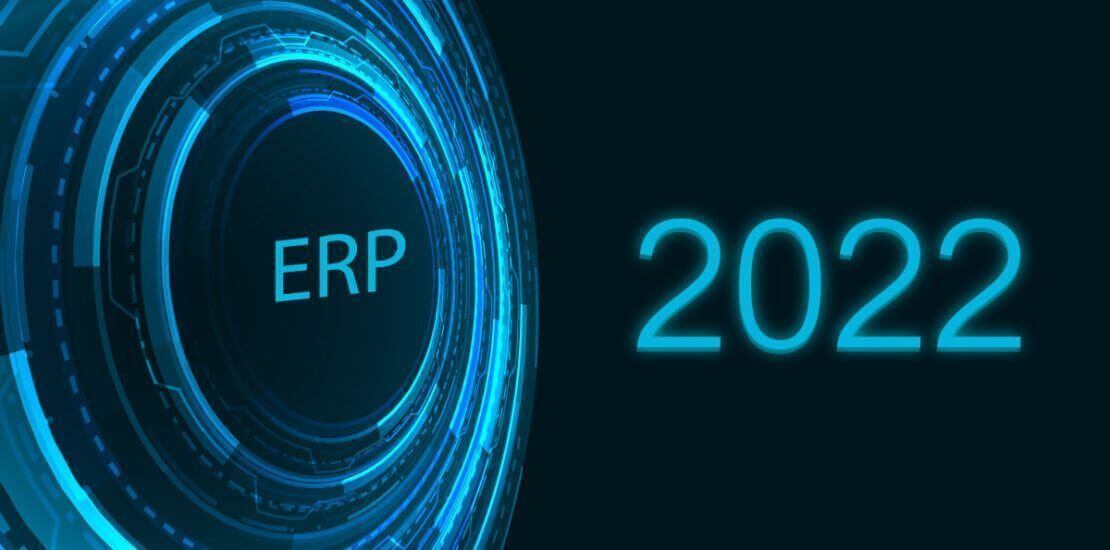ERP trends will matter in 2022 ?
- January 19, 2022
- Posted by: Siriluck Sukitphittayanon
- Category: Articles-EN


“Software is just too expensive” is a common myth that has caused enterprises to hesitate about ERP modernization. However, there’s some truth to it. After all, it’s well-known that effective future-ready ERP systems don’t come cheap. But this hesitancy has lately become an insurmountable barrier for those looking to stay competitive, given that ERP is the lifeblood of teams like procudtion, marketing, sales, finance, facilities and warehouse management, etc.
Since 2019, enterprises have also been under a lot of pressure to optimize their operations amid remote working conditions. Hence, it’s no surprise that they’re spending more than ever before, enabling IT efficiency. Gartner has even predicted that global IT spending would reach $4.5 trillion, which marks a sharp increase of 5.5% in 2022, with the enterprise software at 11.5%. And ERP systems are poised to be at the front of the center of new technology adoption. So, what’s on the near horizon for them?
Let’s look at what 2022 is likely to have
ERP trends to watch out for in 2022
Fully mobile ERP: A new Uberization era
If you’re wondering whether you read about this trend last year, you probably did because mobile ERP has been a water cooler conversation for years. But it’s important to note that being accessible on mobile devices and adopting a mobile-first strategy is completely different. The fact is that mobile ERP is yet to mature as many have merely enabled the system to be mobile-compatible.
In 2022, as we head towards an uncertain future, enterprises will look to start bringing in seamless ‘anytime, anyplace’ ERP availability by creating an app-based system. This proverbial Uberization of ERP will simplify how users can easily familiarize themselves with its functionalities and maximize its potential.
Cloud acceleration: From good-to-have to must-have
SaaS-based ERP was not exactly a breakthrough technology in 2020. But when the need for technology supersedes the availability, enterprises begin to feel the heat, as the pandemic has proved. With remote work becoming the new normal, taking ERP to the cloud has become mandatory. As reports have shown, nearly 50% of employees in the US alone have moved away from cities and claim to have no plans of returning. It also means that cybersecurity issues could prove to be a disaster for systems with weak governance protocols. This is already an industry-agnostic problem, as evidenced by a recent ransomware attack by hackers on one of the largest refined products pipelines in the US – causing a temporary shutdown.
In 2022, there will be an uptick in accelerated cloud usage, focusing on improving security and compliance to deal with these new realities.

Advanced data analytics: A brave new spreadsheet-less world
Once again, this may sound familiar because data analytics seems like a no-brainer, considering the frequency and volume of data fed into ERP systems. But the running theme of 2022 would be about being more focused on adoption or gaining technology maturity. In simpler words, it’s about moving to a spreadsheet-less and agile ERP system that is less about displaying snazzy data visualization and more about providing actionable insights.
Getting ad-hoc reports and heaps of ERP-related data analytics is only half the job. In 2022, enterprises would be looking to finish it and elevate their predictive decision-making capabilities.
Real-time data: Strike when the information is hot
The ability to provide real-time data is invaluable since multiple teams tend to leverage the ERP system – from operational teams executing day-to-day work to C-Suite executives making strategic decisions. Hence, there’s a greater need for information transparency, which could help enterprises get past potentially now-or-never situations. It can also make it easier for users to communicate and collaborate in real-time – thereby empowering the system to deliver smarter data analytics at an accelerated pace.
There’s no doubt that data volume is a challenge, given the explosive increase in the number of digital touchpoints. But, as earlier mentioned, accelerated cloud adoption would present itself as a major problem-solver in 2022.
Hyperautomation: Doing more with less
Maximizing ERP ROI depends on how efficiently, conveniently, and quickly your teams can use the system. There are no silver bullets to ensure this happens, but hyper-automation certainly comes close by helping them avoid repetitive, mundane, or even complex tasks. Hyperautomation can eliminate delays, inaccuracies, and inconsistencies typically associated with ERP processes by automating complicated workflows. It also facilitates digital onboarding of resources, reduces the ERP implementation cycle, and unearths new automation opportunities.
In 2022, enterprises will rely on hyper automation to bring agility and scalability while using its cognitive prowess to bid farewell to unstructured data inputs.
AI: Still the latest trend in ERP
Artificial Intelligence (AI) has been called the “latest trend” by enterprises for so many years that at this point – it sounds a bit fishy. For instance, AI technologies like RPA have already proven to drive seamless ERP operations. So, is AI really a trend anymore, considering ERP process owners are still trying to increase the scope of A-based automation? The answer is a resounding “yes,” as there’s a big difference from being AI-based to a fully AI-driven ERP system.
In 2022, enterprises will look to infuse their ERP systems with decisioning intelligence – from making recommendations for the next best actions to business planning. In addition, it can result in streamlined workflows that manage key processes like vendor payment/exit/discounts, etc.
Final thoughts
Even just a few years ago, it seemed reasonable that enterprises could get away from undertaking ERP modernization initiatives by playing the “Software is too expensive” card. Others used the “My ERP system is just different” excuse. As we approach the end of 2022, these excuses can no longer be tolerated due to irrevocably changing market and workplace dynamics. The pace at which ERP systems are evolving has picked up too. For instance, while still in its infancy stage, autonomous ERP is gaining momentum with the promise of minimal human intervention while fulfilling critical business requirements. IoT integration is also making its way into ERP systems – allowing real-time data exchange for actionable accuracy.
But as John Maeda – a popular technologist – once said, “Simplicity is about subtracting the obvious and adding the meaningful.” And in 2022, enterprises must aspire to look at ERP modernization – one meaningful step at a time.

